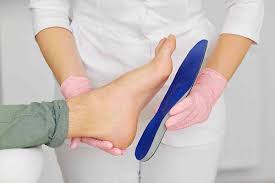Custom orthotics are specialized shoe inserts designed to address the unique biomechanical needs of the feet. Unlike over-the-counter options, custom orthotics are specifically tailored to fit the structure of an individual’s foot. For podiatrists, understanding this therapeutic solution helps support patients dealing with various foot and lower extremity conditions that may interfere with mobility and overall comfort.
How Are Custom Orthotics Designed?
Creating custom orthotics starts with carefully assessing the patient’s feet. Specialists conduct a physical examination, perform a gait analysis, and sometimes use imaging studies. They then create a model of the foot using a plaster cast, foam impression, or 3D technology. Finally, they craft the orthotics to correct specific structural or functional issues.
Orthotics use different materials based on their purpose. Manufacturers choose softer materials like EVA foam for cushioning, while they use rigid options like polypropylene to provide structural support and control abnormal foot movements. This careful material selection encourages orthotics that meet specific comfort and functionality needs.
What Conditions Do Orthotics Help Manage?
Orthotics play a key role in managing various foot-related conditions. These inserts provide support and alignment, reducing discomfort and improving functional biomechanics. They commonly treat conditions such as:
- Bunions: Orthotics help redistribute pressure away from the bunion-affected joint while helping maintain proper foot alignment.
- Heel Pain: For those dealing with plantar fasciitis or other forms of heel pain, orthotics provide cushioning and targeted support to reduce strain on the plantar fascia.
- Flatfoot: Flatfoot leads to overpronation, which can cause additional stress on the ankles, knees, and hips. Orthotics support the arch and improve foot mechanics.
- Foot Arthritis: Orthotics can minimize joint stress and provide shock absorption for individuals with arthritis, improving walking comfort.
By addressing these common foot conditions, orthotics help enhance mobility and overall quality of life. Incorporating orthotics into your routine can be a practical step toward long-term foot health and comfort.
Are There Different Types of Orthotics?
Custom orthotics come in two main types, each serving a specific purpose. Functional orthotics are made from rigid materials and help correct abnormal foot motion or alignment. They are primarily used to support issues like overpronation or supination. Accommodative orthotics, crafted from softer materials, provide cushioning and relief, helping with conditions like diabetic foot ulcers, arthritis, or foot deformities where comfort matters most.
How Do You Fit and Adjust Custom Orthotics?
Confirming a proper fit is key once custom orthotics are created. Patients often require an adjustment period as their feet adapt to the support and alignment the orthotics offer. Regular follow-up appointments allow podiatrists to evaluate their effectiveness and make any necessary adjustments. Gradually increasing wear time helps patients seamlessly incorporate orthotics into their daily routines. Proper communication between the patient and podiatrist is a valuable step toward the best outcomes.
Supporting Foot Health with Tailored Solutions
Orthotics solve biomechanical foot challenges by enhancing comfort, improving mobility, and keeping patients active. These inserts target specific issues and fit the unique structure of each foot, delivering tailored support where it’s needed most. Podiatrists personalize orthotics to provide better care and boost their patients’ quality of life.

